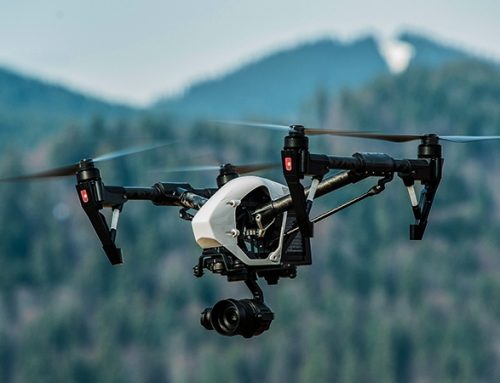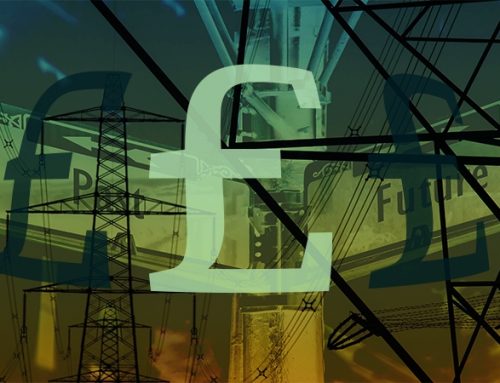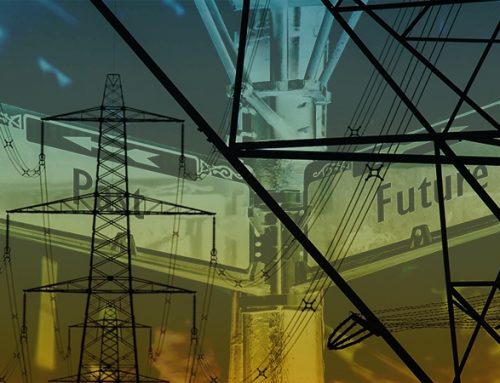Today I came across a fascinating piece of research which has the potential to be a real game-changer – an international research team led by scientists at The University of Texas and Hanyang University in South Korea has developed high-tech yarns that generate electricity when they are stretched or twisted. In their study, published in Science, they describe “twistron” yarns and their possible applications, including harvesting energy from the motion of ocean waves or from temperature fluctuations.
“The easiest way to think of twistron harvesters is, you have a piece of yarn, you stretch it, and out comes electricity,”
– Dr. Carter Haines, associate research professor, Alan G. MacDiarmid NanoTech Institute at UT Dallas.
What exactly is a carbon nanotube?
Carbon nanotubes are allotropes of carbon with a cylindrical structure, which have exceptional strength and stiffness. They have extraordinary thermal conductivity, mechanical, and electrical properties.
Nanotubes are members of the fullerene structural family. Their long, hollow structure with the walls formed by one-atom-thick sheets of carbon, called graphene are rolled at specific and discrete (“chiral”) angles, and the combination of the rolling angle and radius decides the nanotube properties; for example, whether the individual nanotube shell is a metal or semiconductor. Individual nanotubes naturally align themselves into “ropes” held together by van der Waals forces.
How the yarns generate electricity
To create the twistrons, the researchers twist-spun the nanotubes into high-strength, lightweight yarns, twisting until the yarns coiled like an over-twisted rubber band. To enable the yarns to generate electricity, they were coated in an ionically conducting material, or electrolyte, such as salt-water.
“Fundamentally, these yarns are supercapacitors. In a normal capacitor, you use energy—like from a battery—to add charges to the capacitor. But in our case, when you insert the carbon nanotube yarn into an electrolyte bath, the yarns are charged by the electrolyte itself. No external battery, or voltage, is needed,”
– Dr. Na Li, research scientist at the NanoTech Institute.
When a harvester yarn is twisted or stretched, the volume of the carbon nanotube yarn decreases, bringing the electric charges on the yarn closer together and increasing their energy. This increases the voltage associated with the charge stored in the yarn, enabling the harvesting of electricity. Stretching the coiled yarns 30 times a second generated 250 watts per kilogram of peak electrical power when normalised to the yarn’s weight.
Potential applications
In the lab a twistron yarn weighing less than a housefly could power a small LED, which lit up each time the yarn was stretched.
To show that twistrons can harvest waste thermal energy from the environment, the team connected a twistron yarn to an artificial muscle that contracts and expands when heated and cooled. The yarn was able to convert the mechanical energy generated by the muscle into electrical energy. The researchers also sewed the yarns into a shirt and demonstrated that normal breathing stretched the yarn to generate an electrical signal, indicating potential use as a respiration monitor.
“Electronic textiles are of major commercial interest, but how are you going to power them? Harvesting electrical energy from human motion is one strategy for eliminating the need for batteries. Our yarns produced over a hundred times higher electrical power per weight when stretched compared to other weavable fibres reported in the literature,”
– Dr. Ray Baughman, director of the NanoTech Institute
The team also demonstrated the ability of the yarns to generate electricity from wave motion in an experiment in the sea off the east coast of South Korea. They attached a 10 centimetre-long yarn, weighing only 1 milligram, between a balloon and a sinker that rested on the seabed. Every time a wave arrived, the balloon rose, stretching the yarn up to 25% and thereby generated electricity. The technique could be scaled by operating many such yarns in parallel.
“If our twistron harvesters could be made less expensively, they might ultimately be able to harvest the enormous amount of energy available from ocean waves. However, at present these harvesters are most suitable for powering sensors and sensor communications. Based on demonstrated average power output, just 31 milligrams of carbon nanotube yarn harvester could provide the electrical energy needed to transmit a 2-kilobyte packet of data over a 100-meter radius every 10 seconds for the Internet of Things,”
– Baughman.
And therein lies the rub…production of these yarns is very expensive.
Many discoveries arrive in a blaze of hopeful publicity, only to fizzle out when attempts are made to economically reproduce them at scale, and twistrons may face the same fate. However, if an economic mode of production can be developed, the potential applications would only be limited by our imaginations. But that’s a big if….






Give me a call when they can power an arc furnace & a rolling mill or a hospital, or a train or tram or charge an EV or run my microwave or power this computer ….cheaper & more reliably than I get now.
I suppose bungee jumpers could power a winch to haul themselves back up (:-))
I suppose bungee jumpers could power a winch to haul themselves back up (:-))
I should have added…
Less the losses of –
Kinetic energy to electricity;
Charging battery/capacitor;
Discharging battery/capacitor;
Winch motor.
Lol…loving the bungee idea (as long as I’m not expected to try it out!!)
But on a more serious note, I don’t actually imaging twisted nanotubes will replace high-intensity energy sources, but that doesn’t mean they couldn’t have a place (IF they can be produced economically). There’s a lot of hype around wearable tech, and charging your devices just by breathing could definitely be interesting for that. However I can see real potential in the area of medical devices.
It’s very early days, and this tech may turn out to be completely uneconomic and have no real-life applications, but as a new way of converting mechanical to electrical energy, I found it interesting.
So how does the conversion efficiency compare to the best piezoelectric crystals?
Hi Steve,
Apologies for the delayed reply….I reached out to the research team and they have been kind enough to provide me with some information. On comparative efficiency, they said:
“…the Twistron structure is quite different so there is no direct comparison with piezoelectric which even in fiber format have limited flexibility and dimensions. In general, piezoelectric materials have reasonable mechanical-to-electrical efficiency but piezoelectric energy harvesters have low efficiency in off-resonance condition. There are significant losses incurred in coupling external mechanical energy with piezoelectric material. One simple way to imagine this issue is by noticing that many researchers use piezoelectric patches in shoe sole to harvest human walking motion and generate milliwatt power. However, the mechanical power available is between 50 – 100 W [roughly 70W for a 70 kg person walking at 2 steps per second].”
They’re working on a paper describing the wave harvester technique in more detail and have offered to send me a copy – as and when I receive something, I will update my post.
I also asked about cost. Apparently they can achieve 250 W/kg, and the lab cost of the twistrons is tens of USD. This sounds as if it could be competitive for micro applications such as wearable devices, and, if the 250 W/kg is achievable at grid scale, this is of the same order of magnitude as a CCGT.
I hope this helps!
Kathryn
Many discoveries arrive in a blaze of hopeful publicity, only to fizzle out when attempts are made to economically reproduce them at scale, and twistrons may face the same fate. However, if an economic mode of production can be developed, the potential applications would only be limited by our imaginations.
With respect, no. Applications would be limited by the actual mechanical energy available to convert and the efficiency of the process.
AS with renewable energy, where the smoke and mirrors and hype disguises the basic underlying inconvenient truths, that there isn’t much energy to harvest in the first place, and what there is is not constantly available.
Clearly the tech needs to be economic, but I think the real potential here is with wearables….I don’t think it would work for large-scale applications such as tidal/wave power, but in areas where batteries are difficult to access, bulky or otherwise inconvenient, this type of technology could have a place. The research team developed a prototype breathing monitor…the medical applications alone could be significant…but ONLY if the production is economic. At the moment this is a laboratory curiosity, but as a previously unknown method of converting mechanical energy into electrical energy I think it’s interesting…
Hi Kathryn,
Interesting technology but unfortunately not all that novel – piezoelectric wave energy generators were being patented almost 20-years ago if not sooner (see: https://www.google.com/patents/US6194815), and have been considered since (see: http://www.ewp.rpi.edu/hartford/~ernesto/Su2013/ET/MaterialsforStudents/Ott/Zurkinden2007-Piezoelectric.pdf, https://www.researchgate.net/publication/267605903_Study_on_Wave_Power_Generator_Using_Flexible_Piezoelectric_Device).
Piezoelectric polymers work in a very similar manner to your nano version – they generate a current when flexed. A common use is the handheld sparking device many people have in their kitchen to light their hobs.
Not sure why they haven’t made it to commercial deployment; probably cost? I’ve always thought they should have been great as in principle they have fewer moving parts than most other wave energy devices.
Thanks for sharing – maybe these nanotubes will have more success.